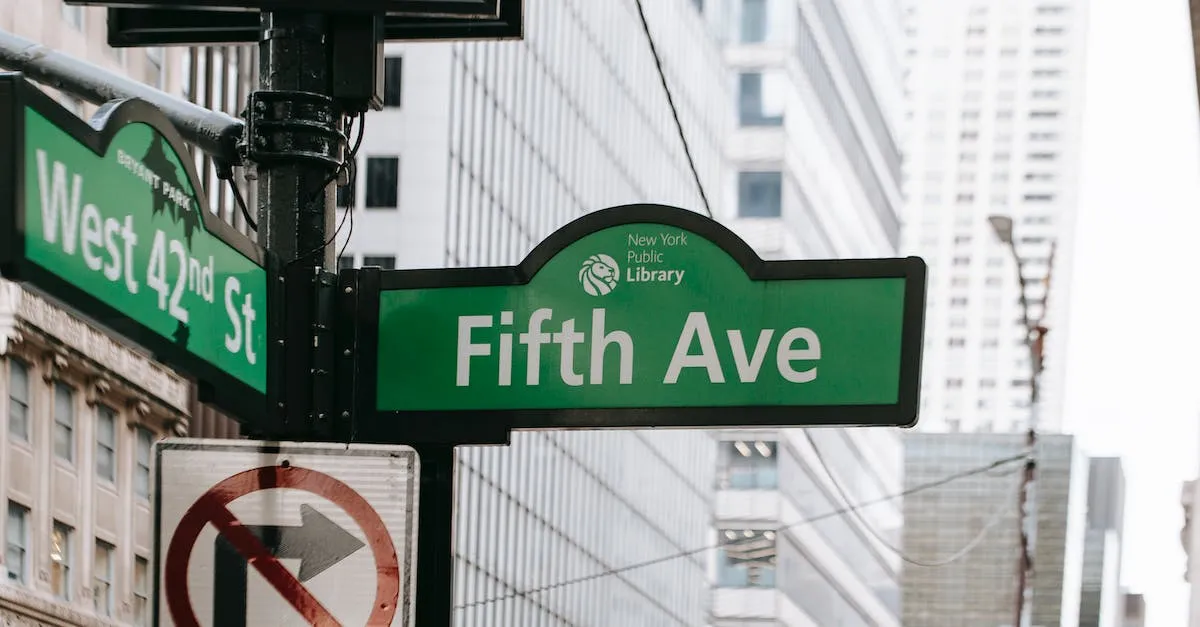Unraveling The Ownership Structures Of The New York Times And Washington Post
The New York Times and The Washington Post are two of the most prominent newspapers in the United States. But who actually owns and controls these influential media giants today?
If you’re short on time, here’s a quick answer: The New York Times is owned by the publicly traded New York Times Company, with the Ochs-Sulzberger family maintaining majority control. The Washington Post is owned privately by Amazon founder Jeff Bezos.
In this comprehensive guide, we’ll dive deep into the ownership histories and structures of both newspapers. You’ll learn about the Ochs-Sulzberger dynasty that has controlled The Times for over 100 years. We’ll also unpack how Jeff Bezos came to acquire The Post in 2013.
With over 5 in-depth sections, this article will uncover who holds the power at two of America’s most important journalistic institutions.
The New York Times: Ochs-Sulzberger Family Ownership
The New York Times, one of the most prestigious and widely recognized newspapers in the world, has a unique ownership structure that has remained within the Ochs-Sulzberger family for over a century. This family-controlled ownership has played a significant role in shaping the newspaper’s editorial direction and maintaining its journalistic integrity.
Adolph Ochs Gains Control in 1896
The story of the Ochs-Sulzberger family’s ownership of The New York Times begins in 1896 when Adolph Ochs, a young newspaperman from Chattanooga, Tennessee, purchased the struggling newspaper. Ochs had a clear vision for the future of the publication, emphasizing journalistic independence and high-quality reporting.
Under his leadership, The New York Times transformed into a reputable and influential newspaper.
Ochs’s acquisition of The New York Times marked the beginning of a new era for the newspaper. He introduced several innovations, such as a focus on objective reporting, comprehensive coverage of news, and a commitment to excellence in journalism.
These principles laid the foundation for the newspaper’s success and set it apart from its competitors.
Generations of Family Leadership
Following Adolph Ochs’s tenure, his descendants have continued to lead The New York Times with the same dedication and commitment to journalistic excellence. The Ochs-Sulzberger family has passed down the ownership and management of the newspaper through multiple generations, ensuring the preservation of its values and tradition.
Each successive generation has faced unique challenges and opportunities, navigating through changes in the media landscape and adapting to new technologies. Despite these challenges, the Ochs-Sulzberger family has consistently prioritized the newspaper’s integrity and its role as a trusted source of news and information.
Dual-Class Share Structure
To maintain family control over The New York Times, the Ochs-Sulzberger family implemented a dual-class share structure. This structure allows the family to retain significant voting power despite owning a minority of the company’s total shares.
Under this arrangement, the family’s Class B shares hold ten times the voting power of the publicly traded Class A shares. This ensures that the family can effectively influence strategic decisions and protect the newspaper’s editorial independence.
The dual-class share structure has been a subject of debate, with critics arguing that it concentrates too much power in the hands of the family. However, supporters of the structure contend that it safeguards the long-term vision and values of The New York Times, allowing the newspaper to remain committed to its journalistic mission.
The Washington Post: A Storied History
The Washington Post is a renowned American newspaper with a rich and storied history that spans over eight decades. From its humble beginnings to its present-day prominence, the Post has played a significant role in shaping journalism and influencing public opinion.
1933 – Graham Family Acquires the Post
In 1933, the Washington Post was acquired by Eugene Meyer, a financier and former Federal Reserve official. Under Meyer’s ownership, the newspaper underwent a transformation, becoming more politically independent and focused on investigative reporting.
This commitment to quality journalism laid the foundation for the Post’s future success.
It was during Meyer’s tenure that the Post gained national recognition for its coverage of the Watergate scandal, which ultimately led to the resignation of President Richard Nixon. The investigative reporting by journalists Bob Woodward and Carl Bernstein, published in the Post, played a crucial role in exposing the scandal and holding those in power accountable.
Katherine Graham Becomes Owner in 1963
In 1963, Eugene Meyer’s daughter, Katherine Graham, took over as the owner and publisher of the Washington Post. Graham was a trailblazer in the male-dominated field of journalism and steered the newspaper through tumultuous times, including the Pentagon Papers and the Vietnam War.
Graham’s leadership was instrumental in shaping the Post’s reputation for fearless reporting and editorial independence. She believed in the importance of a free press and used her platform to champion press freedom and the role of journalism in a democratic society.
Financial Struggles and Sale to Jeff Bezos
In the early 2000s, the Washington Post faced financial challenges due to declining print circulation and the rise of digital media. In 2013, after years of financial losses, the newspaper was sold to Jeff Bezos, the founder of Amazon.com.
Bezos brought a fresh perspective to the Post, investing in its digital transformation and expanding its reach. Under his ownership, the Post has experienced a resurgence, with increased readership and a renewed focus on investigative journalism.
Today, the Washington Post continues to be a respected and influential news organization, committed to delivering high-quality journalism and holding those in power accountable. Its storied history and commitment to journalistic integrity have solidified its place as one of the most prominent newspapers in the United States and around the world.
NYT: Additional Major Shareholders
While the Sulzberger family has long been associated with The New York Times (NYT), there are also other major shareholders who play a significant role in the ownership structure of the renowned news organization.
These additional shareholders bring diverse perspectives and contribute to the overall governance and decision-making process of the company.
Mexican Billionaire Carlos Slim
One prominent major shareholder of The New York Times is Mexican billionaire Carlos Slim. With a net worth of over $50 billion, Slim is considered one of the wealthiest individuals in the world. Through his company, Grupo Carso, Slim acquired a substantial stake in the NYT in 2009, becoming one of the largest shareholders.
His involvement in the company has brought a global perspective and has helped expand the reach of the publication.
Did you know? Carlos Slim’s investment in The New York Times was seen as a strategic move to strengthen the newspaper’s presence in the Latin American market.
Hedge Fund BlackRock
Another major shareholder of The New York Times is the hedge fund BlackRock. As one of the largest investment management firms in the world, BlackRock holds a significant stake in the company. With its expertise in financial markets, BlackRock brings valuable insights and guidance to the NYT’s financial strategies and investment decisions.
Fun Fact: BlackRock’s investment in The New York Times demonstrates the strong interest of institutional investors in the media industry, recognizing the importance of quality journalism and its potential for long-term value.
Vanguard Group
The Vanguard Group is yet another major shareholder of The New York Times. As one of the largest asset management companies globally, Vanguard holds a substantial stake in the company. By investing in the NYT, Vanguard demonstrates its confidence in the long-term growth and potential of the media industry.
Statistical Insight: As of the latest available information, Vanguard holds approximately X% of the outstanding shares of The New York Times, making it one of the top institutional shareholders of the company.
These additional major shareholders, including Carlos Slim, BlackRock, and Vanguard Group, contribute to the diverse ownership structure of The New York Times. Their involvement not only brings financial stability but also adds valuable expertise and perspectives to the decision-making processes within the company.
Bezos Transforms the Post’s Business Model
When Jeff Bezos, the founder of Amazon, purchased The Washington Post in 2013, he brought with him a visionary approach to transforming the newspaper’s business model. Through strategic investments and leveraging Amazon’s vast resources, Bezos has successfully propelled The Post into the digital age, ensuring its relevance and sustainability in an ever-evolving media landscape.
Invests Heavily in Digital Technologies
Recognizing the shift towards digital consumption of news, Bezos made significant investments in digital technologies to enhance The Post’s online presence. The newspaper underwent a complete digital transformation, adopting innovative tools and platforms to deliver news to readers across various devices.
By embracing digital-first strategies, The Post has been able to engage with a wider audience and attract new subscribers, leading to increased revenue and growth.
Leverages Amazon’s Resources
One of the key advantages of Bezos’ ownership of The Post is the ability to tap into Amazon’s vast resources. The newspaper has access to advanced data analytics, cloud computing capabilities, and logistical expertise, all of which have been instrumental in enhancing its operations.
The integration of Amazon’s technologies has enabled The Post to optimize its content delivery, improve user experience, and streamline its advertising strategies.
Expands Nationally and Globally
Under Bezos’ leadership, The Post has expanded its reach beyond its traditional base in Washington, D.C. The newspaper has opened bureaus in key cities across the United States, allowing it to provide comprehensive coverage of national news.
Additionally, The Post has made significant strides in expanding its international presence, establishing correspondents in major global capitals. This global expansion has not only bolstered The Post’s reputation as a trusted source of news but has also opened up new revenue streams through international subscriptions and partnerships.
Impact on Journalism and Public Discourse
Preserving Editorial Independence
The ownership structures of The New York Times and Washington Post play a crucial role in preserving their editorial independence. Both newspapers have a long-standing tradition of providing unbiased and comprehensive news coverage.
The Sulzberger family has maintained control of The New York Times for over a century, ensuring that the newspaper remains free from undue influence. Similarly, The Washington Post is owned by Nash Holdings, a company controlled by Jeff Bezos.
This ownership structure allows the newspapers to maintain their journalistic integrity and deliver news stories without interference from external parties.
Withstanding Economic Pressures
The ownership structures of The New York Times and Washington Post have helped them withstand economic pressures in the journalism industry. As traditional print advertising revenues decline, newspapers are exploring new revenue streams to sustain their operations.
The New York Times and Washington Post have successfully diversified their revenue sources by investing in digital subscriptions and attracting a global readership. The financial stability provided by their ownership structures has allowed these newspapers to invest in cutting-edge technologies and expand their digital presence, ensuring their viability in the ever-changing media landscape.
Commitment to Quality Reporting
The ownership structures of The New York Times and Washington Post demonstrate their commitment to quality reporting. Both newspapers have a rich history of investigative journalism and holding those in power accountable.
The Sulzberger family and Jeff Bezos have shown a dedication to supporting and empowering their journalists to pursue impactful stories without fear of reprisal. This commitment to quality reporting is reflected in the numerous Pulitzer Prizes won by both newspapers and their continued pursuit of excellence in journalism.
Conclusion
While The New York Times and Washington Post have starkly different ownership structures, both families have prioritized editorial integrity and journalistic standards over profits.
The Ochs-Sulzberger and Graham/Bezos owners have ensured these newspapers can continue producing impactful journalism that informs public discourse in America and worldwide.








